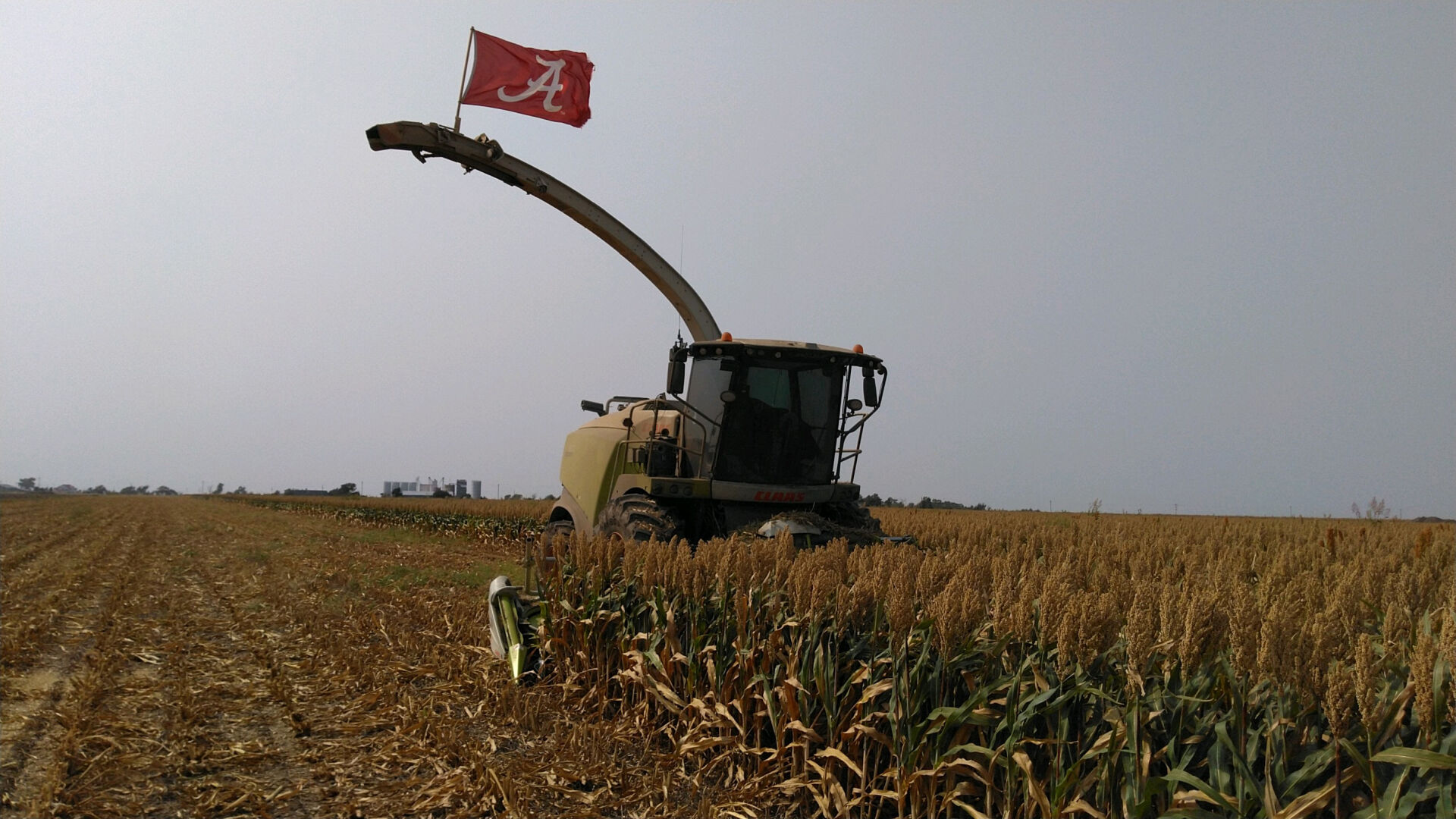Farming is full of processes. A process for planting. Another for harvest. A custom harvester does what works for him and is best for his customers.
Beau Froese of Froese Brothers Harvesting, Inman, Kansas, and his family have found a process that works for them, especially when it comes to harvesting forage sorghum.
“We have been chopping forage sorghums for longer than I have been alive,” Froese said. “It has been an important part of our business because it extends our chopping season later into the fall than corn silage does.”
When it comes to harvesting forage sorghum as compared to corn silage, there are a few differences.
“It usually has a larger window of acceptable moisture content in that it doesn’t dry down quite as quickly as corn does—although part of this can also be attributed to the cooler fall temperatures while it is being harvested,” he said.
For Froese, his process for chopping forage sorghum and chopping corn for silage is basically the same, except when the customer has special requests. Those could be swathing it into windrows for dry down before chopping. This is done for a couple reasons.
“Sometimes it is done so that the ground can be prepared for the next crop to be planted sooner than it would be if the crop were left to dry down on its own,” he said. “It can also be done to prevent the crop from falling down in high winds or snow which will make harvesting it much more difficult.”
Best-case scenario
A forage harvester like Froese wants to be in contact with a client several weeks in advance. His end goal is to achieve the best quality feed for their needs, “because we all know that weather and other factors can quickly change Plan A into Plan B or C.”
“There can be different standards when determining when it’s time to start chopping,” he said. “Most of the sorghum that we chop is done after the grain has turned from green to red and the bottom quarter of the stalk has turned brown.”
At that point tests like squeezing or twisting the stalk at varying heights can be done to determine the moisture content.
“Another standard is to chop the sorghum when the grain is at a soft dough stage by whatever means necessary,” Froese said. “This often requires a swather to come in so that the stalk can dry out because whole plant moisture is usually too high when then grain is at this stage.”
Managing kernel processing during or at harvest is a difficult task in forage sorghum, and for Froese it’s a tough choice whether to do so or not.
“That is why many don’t do a very good job or don’t even try,” he said. “If you want to process forage sorghum, you have to let the grain dry down until it is good and hard. If the grain is still soft, it will squish going through the processor and then return to form.”
The next hurdle is having a quality kernel processor, as not all processors are created equal.
“After spending a couple of months processing corn silage, few are in good enough shape to crack the tiny sorghum seeds,” Froese said. “If you get these two factors in place, you still need to close your kernel processor gap, run a good speed differential between your rollers and maybe even slow down a little.”
He’s never seen perfect sorghum seed processing, though.
“But if you get everything right you can crack most of them,” he said.
Froese also has to take into account chop length. Most often it’s left up to the customer to decide what he needs or wants.
“Much of the sorghum that we chop is for cow-calf operations and they want a fine chop so that the calves won’t leave big pieces in the bunk,” he said. “Others want a longer chop with processing to help with rumination.”
Same goes for moisture adjustments at harvest.
“Getting the timing right and working with the customer around the weather are the biggest factors,” he said. “Thankfully, sorghum can make good silage even if it misses the mark for ideal moisture.”
Froese has put up forage sorghum silage when it was still too wet before or if there’s been a killing freeze, especially when it’s been too muddy to get in and out of the fields.
“Though it wasn’t the best feed, it held enough moisture under the crop mat that it was better than everyone expected,” he said.
He also leaves the use of inoculants up to the customer to decide. These inputs work the same on forage sorghum as they do on corn silage.
“There are some that do not use it because sorghum is not as expensive as corn silage but study after study still show it being worth the cost,” Froese said. “I recommend using a well-tested inoculant from a trusted supplier and there is no better place to apply it than at the chopper. Most custom harvesters are set up to apply inoculant for a small fee.”
Other thoughts
In some regions of the High Plains, growers are facing drought, and for Froese, he has to adapt.
“As long as the crop has had enough moisture to grow, drought makes the harvesting process easier because we don’t have to deal with mud while getting trucks in and out of the field,” he said. “Drought during the growing season not only inhibits the yield of the crop, it can also affect how the sorghum ripens.”
He also said the view from the road could be deceiving than what moisture the plant is actually holding on to.
“Sorghum can be a very fun crop to harvest as long as it stays standing. The taller varieties are more susceptible to falling down making harvest very difficult,” Froese said. “It is quieter going through the chopper, in spite of being more abrasive than corn, and it usually has a sweet smell to it.”
For more information about Froese visit www.froesebrothers.com.
Kylene Scott can be reached at 620-227-1804 or [email protected].



